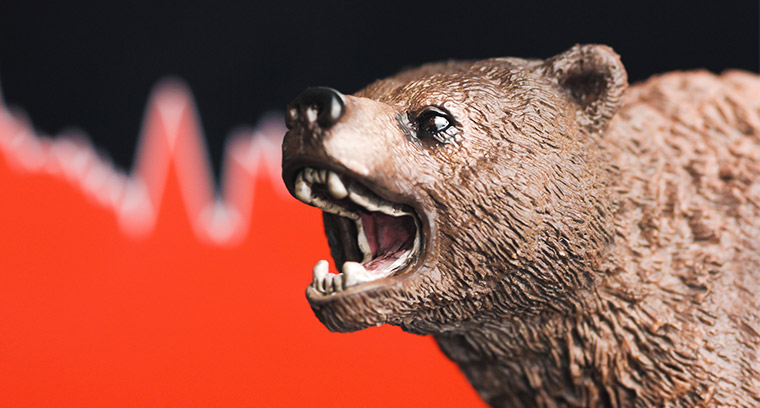Bear
A bear is an investor who expects the price of an asset to fall. This market participant opens short positions, hoping to make a profit when the price of the asset he has invested in drops.

3 minutes for reading
What Bear is
Bear is a market exchange term that describes an investor who is selling, or already has a short market position in an instrument. The investor is pessimistic, waiting for a market crash to happen soon or for the price of an instrument to fall, and tries to use this opportunity to make money in a downtrend.
Characteristics of a bear market
A bear market is a falling market in which the prices constantly renew the lows. It has the following characteristic features:
- A lengthy period of falling prices
- A weak economy
- Investors' loss of confidence with declining trust and optimism
- Growing unemployment
How bear works
There is a view that making money in a growing market is easier than in a falling one. Hence, bears use non-classic investment strategies because their goal is to make money when the market is going down. They actively use short positions and sell the asset, only to buy it again when it becomes cheaper.
Bears borrow stocks from a broker, sell them, wait for their price to drop, buy the stocks again at a lower price, and return the amount they owe to the broker. To decrease potential risks from short positions, such investors use Stop Loss orders.
Great Bear
This nickname was given to Jesse Livermore who managed to make over 1 million USD by trading on a falling market in October 1907. This happened during the time of the first bank panic in the US, which caused a financial crisis in the country that lasted three weeks.
Bankers had to ask Livermore to stop trading short so as to prevent further consequences of the already disastrous situation, and Livermore agreed.
Bear patterns
The most popular patterns used by bears for analysing price charts are:
- Descending Triangle – this forms on a falling market when bears fail to break through an important support level, and the price bounces off it. Meanwhile, highs keep decreasing, indicating pressure from the bears’ side. A breakaway of the support level signals the falling of the price for the height of the pattern
- Head and Shoulders –this pattern demonstrates three highs: the highest one is in the middle, called the Head, and the other two are at its sides, called the Shoulders. Traders mark a line through the shoulders. As soon as the price drops below it, they expect a serious decline in the height of the pattern
- Bearish Flag – this pattern forms after a steep decline of the quotes, and looks like a sideways movement inclined upwards. A breakaway of the lower border of this channel indicates an aggressive movement further down
- Double Top – this forms when buyers try to break through an important resistance level twice, but sellers have enough strength to hold the level. Bulls lose control, and the price drops for the size of the pattern as soon as it breaks the low
 are complex instruments and come with a high
are complex instruments and come with a high  of losing
of losing  rapidly due to
rapidly due to  . 69,88% of retail investor accounts lose
. 69,88% of retail investor accounts lose  when trading
when trading  with this provider. You should consider whether you understand how CFDs work and whether you can afford to take the high
with this provider. You should consider whether you understand how CFDs work and whether you can afford to take the high